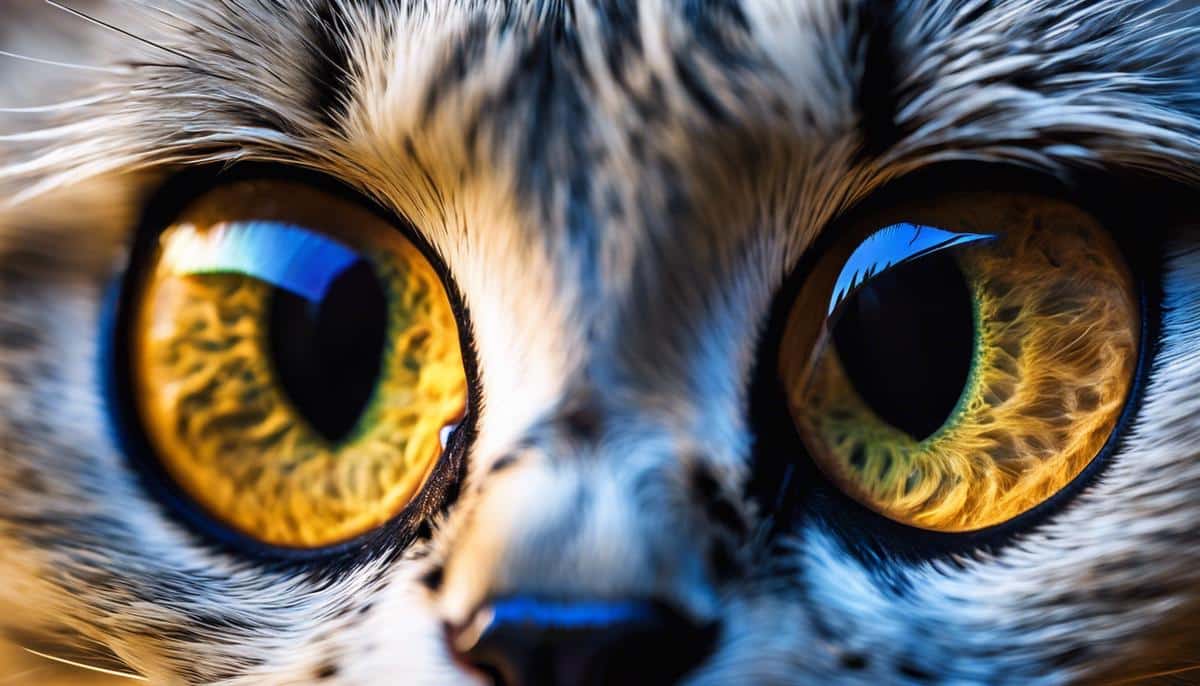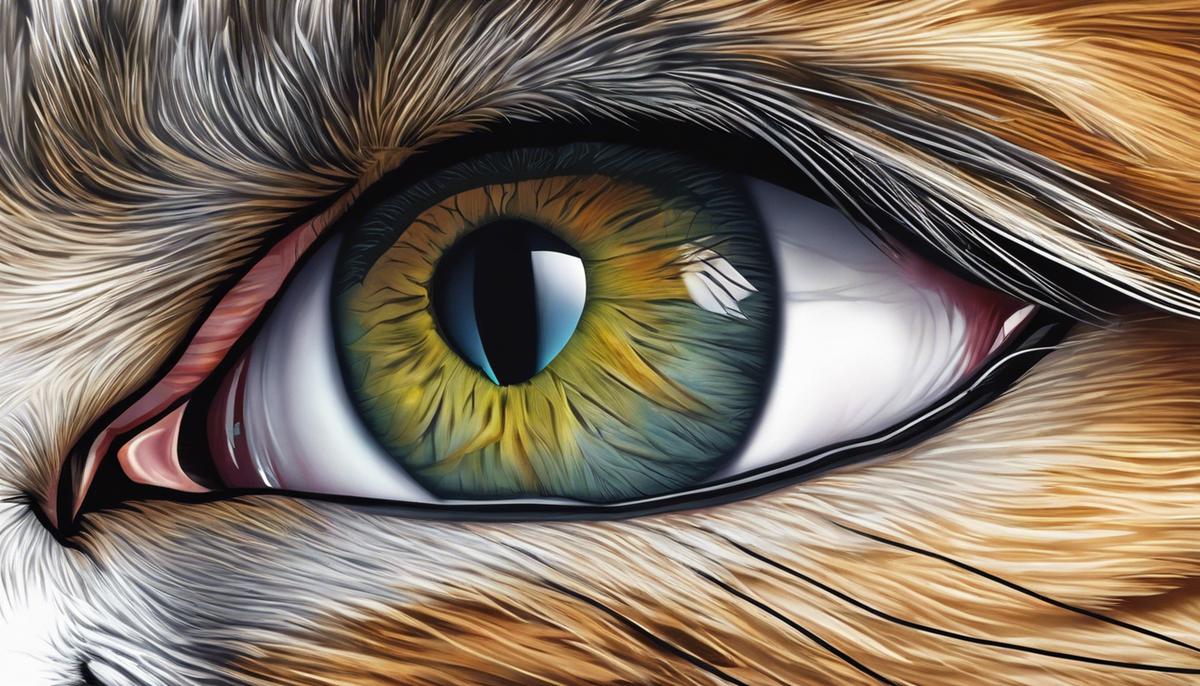
The mysterious gaze of a cat often leaves us spellbound, but the true wonder lies within the intricate anatomy of their eyelids. At first glance, it may seem that cats possess eyelids similar to humans; however, a deeper examination reveals a fascinating and complex ocular structure that enables these graceful creatures to thrive in various environments. Cats have three types of eyelids: the upper eyelid, the lower eyelid, and the enigmatic third eyelid known as the nictitating membrane. This coverage aims to shed light on each eyelid’s unique function, offering a window into the evolutionary marvels that bolster a cat’s visionary prowess and contribute to its overall well-being.
Anatomy of Cat Eyelids
The Marvelous Mechanics of a Cat’s Eyelids: A Closer Look
Embarking on a journey to understand the structure and function of a cat’s eyelids, we uncover a marvel of feline anatomy designed for protection, perception, and purr-fect communication. Recognized for their enigmatic presence and revered in many cultures for their mystique, cats possess a set of tools optimized for both survival and interaction. Among these tools lie their advanced vision capabilities, supported significantly by the intricate operation of their eyelids.
Double the Layers, Double the Protection
Cats are equipped with a dual-layer eyelid system—each eye sporting not just the primary upper and lower eyelids, but also a nifty third eyelid, known as the nictitating membrane. This thin, protective layer is tucked away at the corner of the eye, closest to the nose. Only partially visible when a cat is relaxed, it swiftly sweeps horizontally across the eye when needed, acting much like a windshield wiper during moments of rest or if a speck of dust dares to interfere with feline clarity.
The Nictitating Membrane’s Vital Role
This third eyelid is more than a novelty; it serves critical functions that contribute to a cat’s welfare. It provides an extra barrier against damage and dryness, ensuring the eye’s surface stays moist and debris-free without compromising vision. Additionally, when a cat is unwell, the nictitating membrane may become more pronounced, serving as a telltale indicator for owners that a visit to the vet might be in order.
Blinking: Communication Beyond Words
Blinking in cats, facilitated by the main eyelids, goes beyond mere physiological need. A slow, deliberate blink from a cat to a human is often interpreted as a gesture of trust and affection—a cat’s version of a heartfelt hug without the physical contact. This behavior, dubbed as a “cat kiss,” enhances the bond between cats and their companions and is a window into the emotional lives of these fascinating creatures.
Shielding Vision, Allowing Light
Cats are renowned for their remarkable night vision, owing to eyes finely tuned to make the most of low-light conditions. This prowess is partly supported by their eyelid structure—poised to shield sensitive eyes from harsh lighting while permitting enough light for optimal visibility in the dark. The slit-shaped design of a cat’s pupil, which expands and contracts significantly, works in synergy with eyelid adjustments to regulate light intake.
Safeguarding the Senses
The swift reflexes of a cat’s eyelids are nothing short of impressive. When faced with sudden stimuli, their eyelids act as rapid responders, closing in the blink of an eye to shield those precious peepers from potential harm. This instantaneous reaction helps preserve the integrity of their vision, which is paramount for a predator whose life revolves around keen senses.
In Service of Silent Signals
The subtleties of feline communication are further expressed through the slight movements and positions of the eyelids. A narrowed eye may signal agitation or discomfort, while contentedly half-closed lids are a sign of a relaxed and worry-free cat. As silent communicators, cats rely on these small expressions, with their eyelids playing a crucial role in conveying their inner states.
An Ecosystem in Miniature
In conclusion, the structure and function of a cat’s eyelids are tantamount to an ecosystem in miniature—complex, well-adapted, and absolutely essential to the overall wellbeing of the animal. From providing defense against the elements to enabling clear communication with both their environment and their human friends, the dynamics of a cat’s eyelids are an integral component of what makes these creatures supremely adapted and utterly captivating.
The Third Eyelid in Cats
Cats’ Mystical Third Eyelid: The Nictitating Membrane and Its Roles
Diving into the Feline Visual Fort: The Nictitating Membrane
Ever noticed a thin, translucent layer that sweeps across your cat’s eye when they blink or are sleepy? It’s not a figment of imagination—it’s the elusive third eyelid, formally known as the nictitating membrane. This remarkable feature is more than just an oddity of cat anatomy; it’s a multifunctional tool that plays a crucial role in keeping cats healthy, alert, and on the prowl.
The Hidden Protector
Tucked away in the corner of each eye, the nictitating membrane is a thin, protective sheet that acts as a sort of ‘windshield wiper’ for the eye. It sweeps horizontally across the eyeball, spreading tears evenly, and clearing away debris. Unlike the outer eyelids, this third eyelid acts reflexively and independently, flicking into action quicker than a cat’s lightning-fast pounce.
Moisture Management and Eye Health
The cat’s desert-dwelling ancestors relied on the nictitating membrane to conserve moisture and maintain vision during sandstorms. Today, while housecats may not battle desert elements, they still benefit from the moisturizing and protective features of this ingenious adaptation. It’s integral in preventing dry eyes, which can lead to a legion of eye irritations and jeopardize their extraordinary vision.
An Immune Stronghold
Beyond debris-clearing, the third eyelid harbors important lymphoid tissue, part of the immune system. This tissue provides a first line of defense against pathogens, potentially reducing the risk of infections and contributing to a cat’s overall ocular immunity.
A Subtle Signaler
Sure, cats can’t talk, but their eyes speak volumes—and the third eyelid is part of that silent dialogue. When a cat is relaxed and content, the third eyelid might fleetingly appear. However, should it persistently show in one or both eyes, it’s akin to an alarm siren for potential health issues. It’s a subtle signal that astute pet owners should heed, prompting considerations for a vet visit.
Critical for the Predator’s Pursuit
For a cat’s hunting escapades, impeccable vision is non-negotiable. The nictitating membrane contributes to keeping their eyesight sharp by preemptively shielding the eye during those high-stakes moments of chase, ensuring nothing—not a stray twig or spray of dirt—compromises their hunt-focused gaze.
An Aid in Feline Rest
During slumber, you might glimpse the third eyelid partially covering a cat’s eyes. Not only does this keep the eye surface clean and humidified while they rest, but it also allows cats to awaken and adjust quickly to their surroundings, prepared for any surprises that may await.
Maintaining the Vigil
For the household cat, periodic observation for changes in the third eyelid’s appearance is vital. While a glimpse in a resting cat is normal, prolonged visibility or swelling may indicate an underlying health issue and warrants prompt attention. This is when understanding your feline friend’s ocular health transitions from passive to proactive guardianship.
Cats are creatures of stealth and mystery, with every aspect of their biology fine-tuned for survival and comfort. Their third eyelid is a marvel of feline anatomy, reinforcing their status as both skilled predators and a beloved enigma in the animal kingdom. Thus, the nictitating membrane stands as a testament to the elegant and practical evolution of these captivating creatures, allowing them to see the world with clarity and confidence.
Common Eyelid Problems in Cats
Caring for our feline friends involves more than just feeding them and keeping their litter box clean; it’s also about being vigilant for any signs of health issues. Cat owners should be especially aware of their pet’s eye health, and that includes understanding common eyelid problems that may arise. Here’s a closer look at what to watch out for when it comes to your cat’s eyelids and their well-being.
Common Eyelid Issues in Cats
- Conjunctivitis: Conjunctivitis, or pink eye, is an inflammation of the membrane lining the eyelid. It can be a reaction to dust, pollen, or smoke but is often caused by infections. Symptoms include redness, swelling, and discharge. If your cat seems to be squinting, pawing at their eyes, or if their eyes look red and sore, it’s time for a vet visit.
- Blepharitis: This is an inflammation of the eyelid itself and can affect one or both eyes. Cats with blepharitis might have crusty, swollen, red eyelids with hair loss around the edges. The underlying cause could range from infections to allergies, and treatment usually involves addressing the root issue.
- Entropion: When a cat’s eyelids roll inward, the eyelashes can rub against the cornea, which is painful and damaging to the eye. Known as entropion, this condition can lead to corneal ulcers if left untreated. Surgical correction may be necessary to prevent long-term problems.
- Ectropion: The opposite of entropion, ectropion involves the eyelids rolling outward. This can expose the inner eyelid and lead to dryness and potential infections. Treatment options vary depending on the severity, though surgery might be required in more extreme cases.
- Ptosis: Ptosis is a condition where the upper eyelid droops excessively, which can obscure vision or cause the eye to not open fully; it potentially signifies nerve damage or another systemic issue. Veterinarians can determine if the ptosis is a symptom of a larger health concern.
- Tumors: Eyelid growths can be benign or malignant in cats, just as in humans. Should you notice any lumps or bumps on your cat’s eyelids, it’s essential to get them checked out. Treatment options vary and can include surgical removal.
- Chalazion and Styes: Similar to humans, cats can develop chalazia, which are blocked oil glands, or styes, which are infected oil glands on the edge of the eyelid. These might appear as small swellings and may resolve on their own or, in persistent cases, require veterinary attention.
Finally, it’s worth mentioning that feline herpesvirus is a widespread condition that can affect the eyes and cause recurrent issues. Ongoing management and supportive care should be discussed with a veterinarian to ensure the best quality of life for a cat with this virus.
By closely observing your cat, you can spot many of these issues early and seek the help they need. With such delicate and essential functions at stake, those expressive eyelids deserve our attention to keep our feline companions both happy and healthy. Remember that when it comes to your cat’s eyes, advice from a professional is always invaluable; never hesitate to contact your veterinarian if something doesn’t look right.

Cats’ eyelids go beyond the simple function of blinking and extend into realms of protection and health that are vital for their survival. From the blink of an eye to the swift movement of the nictitating membrane, each action reflects an aspect of a cat’s physiological sophistication. As we look closely into the realm of feline eyes, the knowledge of their eyelids’ anatomy not only deepens our understanding of these enigmatic animals but also enhances our ability to care for our furry companions better. So, the next time you find yourself locked in a tender gaze with a feline, remember the remarkable anatomy at play, keeping those captivating eyes safe and sound.



